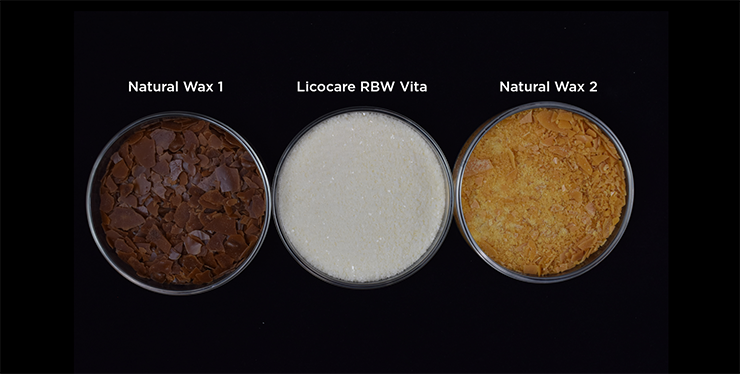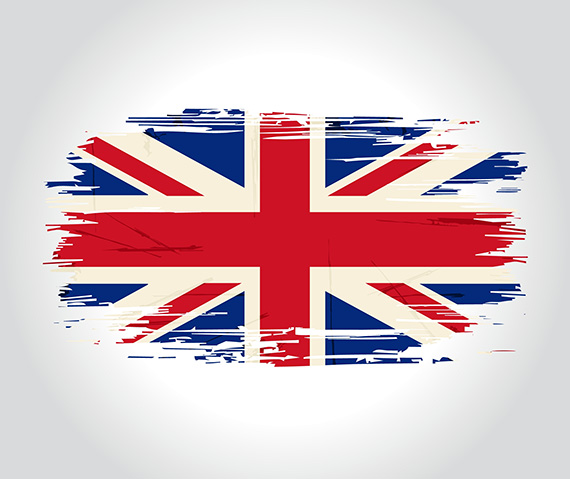More news
- Innovative coatings mitigate effects of deepening climate change
- View from the UK: Navigating chemical policy and sustainability
- Focus on adhesives: Unveiling unbreakable bonds – Testing redefines physical strengt...
- Focus on adhesives: Henkel and Covestro collaborate for sustainability of engineered wood ...
- Advances in construction chemical technology: What’s new in 2024?

The global paints and coatings industry is undergoing a sustainability transformation in which new, greener alternatives are helping to power the shift away from conventional coatings. Here, Tobias Niederleitner, Simon Bodendorfer and Halil Can Aran, Clariant, discuss how upvalued rice bran waxes – additives made from naturally based rice bran wax – are an excellent example and exhibit great application properties
Several megatrends have driven changes in the paints and coatings industry in the past decade. One is sustainability, influenced by issues such as pollution, climate change and the toxicological profile of some products.
Microplastics
One key sustainability challenge is polymer pollution and microplastics. A recent OECD (Organisation for Economic Cooperation and Development) found that plastic waste has doubled in the past two decades and is expected to almost triple by 2060[1]. Plastic waste poses a major risk of generating microplastics. When larger pieces of plastic are not properly disposed of, or recycled, they can end up in the environment where they degrade over time and break down into smaller and smaller pieces until they are reduced to microplastic particles, typically smaller than 5mm in size[2].
Many paints and coatings contain polymers, which act as binders, that fall under the microplastics definition. These binders are used in everything from architecture and marine coatings to road marking and general industry.
The global contribution of paint and coatings to plastic leakage has largely been overlooked as an issue until recently when paints are, in fact, an important source of microplastic leakage into our oceans and waterways. This leakage occurs during application, through wear and tear and maintenance or associated with the End-of-Life of the painted object. Total microplastics leakage from paint is reported in the range 5.2 – 9.8 Mt/year[3].
PFAS regulations
PFAS, including PTFE, are a group of manufactured chemicals that have been used in industry and consumer products since the 1940s because of their unique chemical properties. However, PFAS chemicals can bioaccumulate in people, animals, and the environment over time. Scientific supported data shows they can cause adverse health and environmental outcomes[4].
PTFE is added to paints and coatings to improve flow, scratch resistance, and surface appearance. They are often used in speciality paints and to give stain-resistant and water-repellent properties. Coating developers are actively working to remove potentially harmful ingredients, such as PFAS, from their products and to find safer alternatives.
READ MORE:
Reducing carbon emissions
Climate protection issues are becoming increasingly prominent in paints and coatings. The sector contributes to CO2 emissions through various sources across its production and supply chain, including: energy used during manufacturing, raw material generation (pigments, solvents and binders), transportation and waste management, and disposal.
Increasingly, manufacturers are asked to quantify the carbon footprint of their products. An example of this is the ISO 14067, an international standard that defines the requirements necessary to determine the greenhouse gas emissions produced during each stage in the lifecycle of a product.
Transition to a sustainable future
To meet rising consumer demand for more environmentally friendly products and comply with stricter regulations around climate change, pollution and negative health impacts, the coatings industry needs access to new, high-performing materials that can enable the transition to more sustainable production methods.
One promising new group of additives that are well suited for this challenge are bio-based, polar modified rice bran waxes. Recently commercialised by Clariant, Licocare® RBW Vita additives are derived from a by-product of the rice bran oil industry and are a sustainable alternative to montan and synthetic waxes used widely in paints, coatings and inks.
These upvalued rice bran waxes offer high-performance solutions at the same time as addressing the key sustainability mega-trends transforming the coatings industry. They are renewable-based, non-food competing, contain no microplastics or PFAS chemicals, and have a remarkable renewable carbon index exceeding 98%.

Figure 1. Relative carbon footprint emissions of typical wax products compared to Licocare® RBW. Emissions include biogenic content and are normalised values with Licocare® RBW as the reference
Licocare® RBW Vita are produced by industrial modification processes and their quality is controlled and consistent, unlike unmodified conventional natural waxes. These industrial modification processes allow a broad portfolio of functions, products and solutions, providing different characteristics such as polarity, hardness, saponification, melting point, colour and particle size. This allows users to choose the product most suitable for their specific applications.
Licocare® RBW Vita are lighter in colour than conventional natural waxes allowing more flexible adaptation in different applications where color is of importance.

Figure 2. Licocare® RBW Vita lighter in colour than conventional natural waxes
Use applications
In coatings, rice bran wax products can provide water borne formulations with the same transparency as conventional waxes while improving sliding friction and scratch resistance. They also provide good matting. For coatings applications, micronised versions of rice bran wax are used.




Figure 3. Licocare® RBW Vita can outperform standard waxes in scratch resistance and coefficient of friction, while maintaining the same gloss and transparency of a wood coating compared to other fossil-based waxes.
In inks, as with coatings, micronised versions of rice bran wax are also used. They improve gloss control, rub resistance and anti-blocking behaviour in printing inks and are suited for water- and solvent-based as well as UV-curable systems. With their beneficial effects on release and efficiency, these additives can significantly improve the performance of laser printer toners and similar products.


Figure 4. In flexographic inks RBW based products also show benefits compared to polyolefinic materials (e.g. coefficient of friction, rub resistance/colour difference)
For consumer and care products, customised rice bran waxes enable a variety of formulations serving various industries. These include aqueous formulations such as non-ionic, anionic, cationic or combinations thereof. Rice bran waxes also bring great paste-forming properties in aqueous, oil and solvent based formulations.
The following car care/polish application RBW are compared with other natural waxes as a benchmark.

Figure 5. Licocare ® RBW vita in water-based car care formulation. Showing improved gloss, as well as easier application and polishability vs. conventional natural waxes. Normalised values with Licocare® RBW as the reference
Applications for Licocare RBW® Vita are endless: example applications include care and polish products, wax emulsions, consumer products such as stationary, industrial applications including lubricants, release agents and toner formulations and many more.
Conclusion
Sustainability is driving the demand for coatings that are formulated to reduce carbon emissions, minimise pollution such as microplastics and remove harmful ingredients. Upvalued rice bran waxes like Licocare® RBW Vita, combine innovation with sustainability as high-performing, next-generation, natural-based products to deliver benefits for people and the planet.
As an alternative to montan and synthetic waxes, rice bran waxes contain no microplastics or PFAS chemicals and have a renewable carbon index of more than 98%. They can widely replace waxes used in plastics, paints, coatings, inks and many other specialised applications, meaning that switching to Licocare® RBW Vita is an easy way to meet increasingly stringent sustainability requirements.
Authors
Tobias Niederleitner, Clariant Adsorbents & Additives, Segment Head Coatings & Inks; Simon Bodendorfer, Clariant Adsorbents & Additives, Technical Business Development Manager Coatings & Inks, Halil Can Aran, Clariant Adsorbents & Additives, Segment Head Special Applications
References
[1] https://www.oecd.org/environment/global-plastic-waste-set-to-almost-triple-by-2060.htm
[2] https://echa.europa.eu/hot-topics/microplastics
[3] https://www.e-a.earth/plastic-paints-the-environment/#:~:text=Paint%20appears%20as%20the%20largest,textiles%20fibres%20and%20tyre%20dust).
[4] https://www.epa.gov/pfas/our-current-understanding-human-health-and-environmental-risks-pfas







